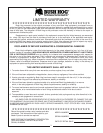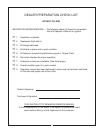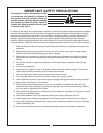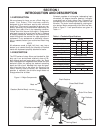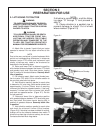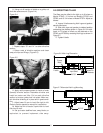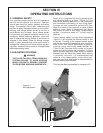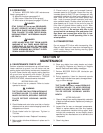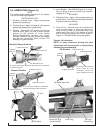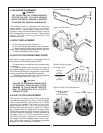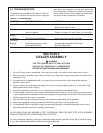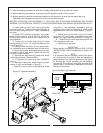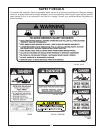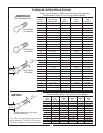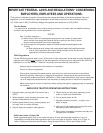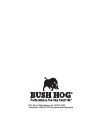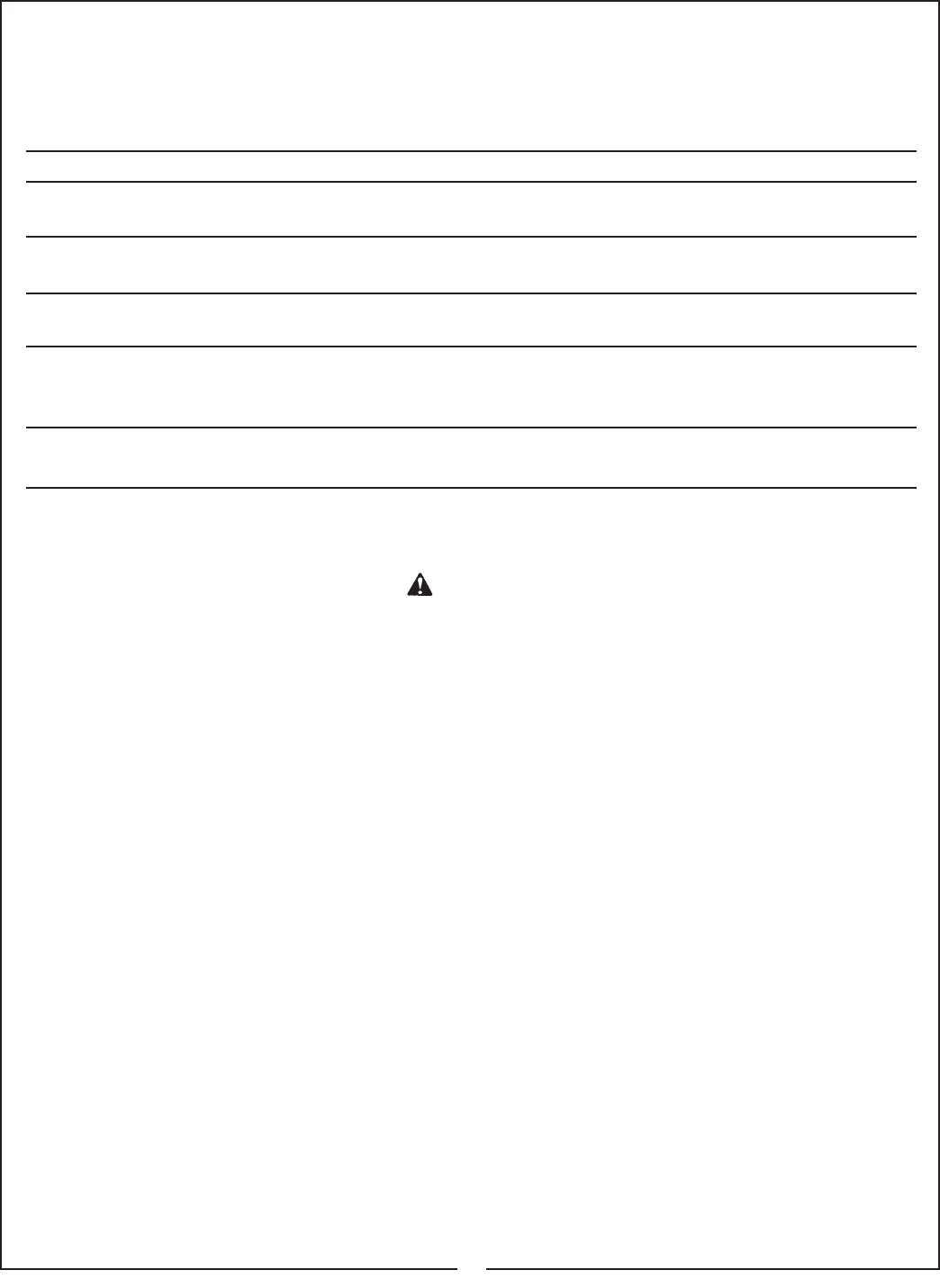
Table 4-1 Troubleshooting
PROBLEM PROBABLE CAUSE REMEDY
Uneven Till Tiller not level right to left Adjust skids for same depth
Adjust tractor lower lift arms
Noisy Loose components Check all bolts for tightness. Refer to Torque Specs
Low oil in gearbox Check for proper oil level. Refer to Lubrication
Section
Knocking or Tiller is tilted towards the rear Adjust 3-point hitch top link to level tiller
Chattering
Bogging Tractor engine speed too slow Increase engine speed to 540 PTO rpm
Ground speed too fast Use lower tractor gear
Vines wrapped around rotor Remove vines
4-7 TROUBLESHOOTING
Troubleshooting procedures are listed in Table 4-1
below. If the problem cannot be solved or replace-
ment parts are necessary, contact your authorized
Bush Hog dealer. Please have ready your machine
name, model number, serial number, purchase date,
and exact cause or description of problem.
SECTION V
DEALER ASSEMBLY
WARNING
THE FOLLOWING SAFETY PRECAUTIONS
SHOULD BE THOROUGHLY UNDERSTOOD
BEFORE ATTEMPTING MACHINE ASSEMBLY.
1. Do not lift heavy parts or assemblies. Use crane, jack, tackle, for trucks or other mechanical devices.
2. Select an area for assembly that is clean and free of any debris which might cause persons working on the
assembly to trip.
3. Arrange parts to be assembled neatly in the work area and have tools or other mechanical assisting
devices in easy reach.
4. Inspect all parts and assemblies thoroughly and remove any sharp edges, grease, oil or dirt which might
cause pieces to slip when handling.
5. Preview the assembly instructions in your operator’s manual before proceeding further.
6. If the assembly instructions call for parts or assemblies to be blocked up, use only blocking material that is
in good condition and is capable of handling the weight of the assembly to be blocked. Also insure that the
blocking material is on a clean, dry surface.
7. Never put hands or any other part of body under blocked up assemblies if at all possible.
8. Always wear goggles or safety glasses when hammering, grinding or drilling metal parts.
9. If the assembly calls for welding or cutting, be sure that there are no flammable materials close at hand
and that bystanders have taken necessary precautions.
AFTER COMPLETING ANY ASSEMBLY STEP, THOROUGHLY READ THE NEXT STEP IN THE ASSEMBLY
INSTRUCTIONS BEFORE PROCEEDING WITH THAT STEP.
10. After completing assembly, thoroughly inspect the machine to be sure that all nuts, bolts, hydraulic fittings
or any other fastened assemblies have been thoroughly tightened.
13



